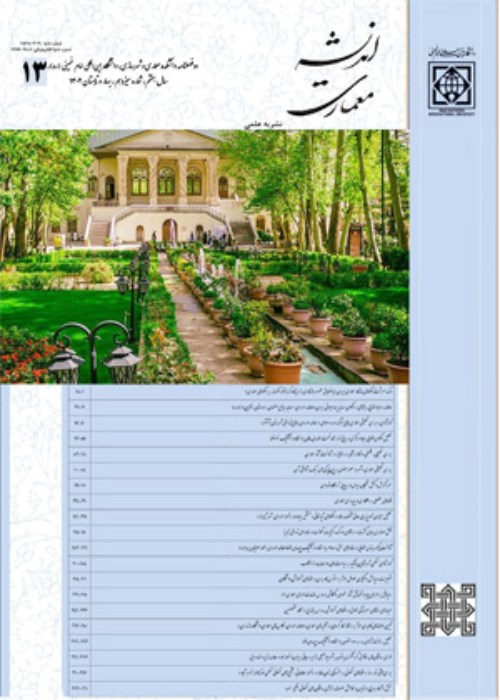Identification and Classification of Architects’ Mental Patterns in Aesthetic Judgment of Residential Building Façade, Using the Q- Factor Analysis
Author(s):
Article Type:
Research/Original Article (دارای رتبه معتبر)
Abstract:
The urbanscape is the mutual point between human and the city. One of the important parameters of urbanscape that could distinguish cities from each other is the urban visual identity and visual aesthetic quality. Building façade as an important part of the tiny urbanscape has a great influence on the aesthetic perception of people from the urban environment. This reminds the need to pay attention to it in the process of creating architectural work. The exterior façades of a building not only reflect the architectural character but also represent the culture, social, climatic, political and economic conditions of the regions. While until Qajar dynasty, Iranian architecture followed the elements and features of Persian-style architecture, during recent years, many developments have been made in Iranian architecture and the view of the commodity about the buildings which reveals the prevalence of fashion in architecture. According to architects and urban designers, in these years, Tehran has had confused designs and colorful characteristics in the construction, façade of residential and public buildings. As the matter of fact, what is known as the architectural style is merely an incorrect imitation of classical, neoclassical, and modern style. In fact, we do not see a particular architectural style in most of the existing buildings. Each of these façades is designed by individual architects and designers with different mental patterns that result in formation of current visual effects and identity of the city. So the expertise of an observer could simply affect his or her aesthetic judgment and perceptual processing. This factor could be considered as a distinguishing element in the study of aesthetic perception. Following this matter, the present study aims to recognize and categorize the effect of formal features (physical) on aesthetic perception of the residential buildings façade and determine the dominant mental patterns among the architecture experts regarding the aesthetic assessment of the façade. The research is a fundamental-exploratory research which uses a descriptive-survey for collecting data and has a mixed research method taken from the pragmatism Paradigm. Identifying the effective factors on façade aesthetics was carried out in three parts: 1- Analysis of documentary content, 2- Delphi survey in two stages and 3- Semantic analysis using landscape grammar tool. In the Delphi survey, among the experts involved in the field of architecture designing and education, 12 people were selected by snowball sampling, which was obtained through theoretical saturation in achieving the factors. In the survey step, in order to reach the mental patterns of the experts, a questionnaire that was obtained from above 3 sections, was distributed among 20 of them. Using Q- factor analysis as a method for detecting and reporting the mental patterns of individuals that was performed using SPSS-22 software, showed that among the experts, the four dominant mental patterns included atomic view (constructive details), the atomic view (decorative details), holistic view (frame-oriented) and holistic view (principle-oriented) at the aesthetic judgment of the facade. The use of these patterns, which can be considered as secondary generators of education (both academic and environmental) and personality, can be the ultimate factor in the process of designing and acquiring an architectural product and its aesthetic assessment.
Keywords:
Language:
Persian
Published:
Architectural Thought, Volume:3 Issue: 5, 2019
Pages:
141 to 154
فایل متن این مقاله در مگیران وجود ندارد!
دسترسی به متن مقالات تنها در صورت اعلام موافقت و همراهی نشریات با مگیران امکان پذیر است.
شایان ذکر است خدمات مگیران به نشریات به صورت رایگان ارایه میشود. کافی است هر نشریه ضمن اعلام موافقت کتبی خود با این خدمات فایل PDF مقالات را در اختیار ما قرار دهد.
شما نیز میتوانید با پیشنهاد استفاده از خدمات مگیران به نشریهای که مقاله شما در آن منتشر شدهاست آن را از این طریق در اختیار کاربران این پایگاه مرجع قرار دهید.
شایان ذکر است خدمات مگیران به نشریات به صورت رایگان ارایه میشود. کافی است هر نشریه ضمن اعلام موافقت کتبی خود با این خدمات فایل PDF مقالات را در اختیار ما قرار دهد.
شما نیز میتوانید با پیشنهاد استفاده از خدمات مگیران به نشریهای که مقاله شما در آن منتشر شدهاست آن را از این طریق در اختیار کاربران این پایگاه مرجع قرار دهید.


